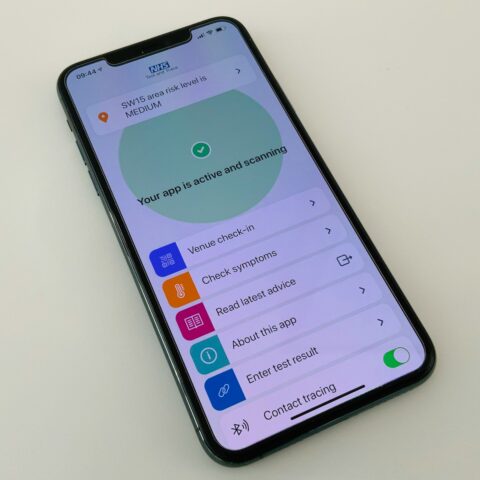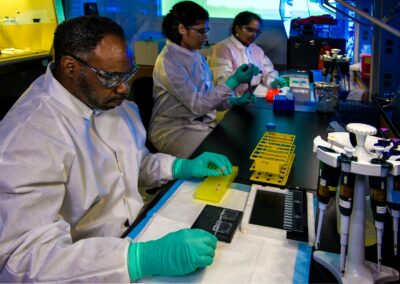Strengthening IoT Security Through Strategic Collaboration
The Importance of Collaboration in Enhancing IoT Security
A collaboration for IoT security enhancement between IoT device manufacturers and security researchers is crucial in addressing these challenges. By working together, these stakeholders can identify and mitigate potential vulnerabilities before they can be exploited by malicious actors. This collaborative approach ensures that IoT products are robust, reliable, and secure, thereby fostering trust and confidence among users and stakeholders.
Manufacturers bring their expertise in product design and development, while security researchers contribute their deep understanding of potential threats and vulnerabilities. This synergy allows for a comprehensive assessment of security risks and the implementation of effective countermeasures. In cities like Riyadh and Dubai, where the adoption of smart technologies is rapidly increasing, such collaborations are essential for maintaining the integrity and security of critical infrastructure.
Moreover, collaboration can lead to the development of industry standards and best practices, which are vital for ensuring consistent and effective security measures across different IoT products. By establishing these standards, businesses can ensure that their IoT devices meet the highest security benchmarks, thereby reducing the risk of cyber-attacks and enhancing overall business success. This collaborative effort is not only beneficial for individual companies but also for the broader industry and society as a whole.
Frameworks Supporting Collaboration Between Manufacturers and Researchers
To facilitate effective collaboration between IoT device manufacturers and security researchers, several frameworks and models can be implemented. One such framework is the establishment of public-private partnerships. These partnerships bring together government entities, private companies, and academic institutions to work towards common security goals. In the UAE, initiatives like the Dubai Smart City project can benefit greatly from such partnerships, as they enable the pooling of resources and expertise to tackle complex security challenges.
Another effective model is the creation of collaborative research consortia. These consortia consist of manufacturers, researchers, and other stakeholders who work together on joint research projects aimed at improving IoT security. By sharing knowledge, resources, and findings, these consortia can accelerate the development of innovative security solutions. For instance, a consortium focused on blockchain technology for IoT security can explore new ways to secure data exchanges between devices, thereby enhancing overall security.
Additionally, establishing standardization bodies is crucial for setting and enforcing security standards for IoT devices. These bodies can develop guidelines and protocols that manufacturers must adhere to, ensuring a consistent level of security across different products. In Saudi Arabia, organizations like the Saudi Standards, Metrology and Quality Organization (SASO) can play a key role in driving such standardization efforts. By aligning their standards with international best practices, these bodies can help local manufacturers compete globally while maintaining high-security standards.
Implementing Collaborative Security Practices
Practical Steps for Effective Collaboration
For collaboration between IoT device manufacturers and security researchers to be effective, practical steps must be taken to facilitate seamless interaction and communication. One essential step is the establishment of secure communication channels that enable real-time information sharing. These channels can be used to report vulnerabilities, share threat intelligence, and collaborate on developing mitigation strategies. In regions like Riyadh and Dubai, where technological advancements are a priority, such communication channels can significantly enhance the security posture of IoT networks.
Another critical step is the implementation of joint training and development programs. These programs can bring together professionals from both fields to enhance their understanding of each other’s challenges and perspectives. For example, manufacturers can gain insights into the latest security threats and mitigation techniques, while researchers can better understand the practical constraints and considerations in product design and development. By fostering a culture of continuous learning and collaboration, these programs can drive innovation and improve the overall security of IoT products.
Furthermore, establishing incentive mechanisms can encourage ongoing collaboration and engagement. These mechanisms can include grants, awards, and recognition for significant contributions to IoT security. By providing tangible rewards for collaborative efforts, businesses can motivate their teams to actively participate in joint security initiatives. In the UAE, government-backed incentive programs can play a crucial role in promoting such collaborations, thereby enhancing the security of IoT networks across the region.
The Role of Executive Leadership in Driving Collaboration
Executive leadership plays a pivotal role in driving collaboration for IoT security enhancement. Leaders in Saudi Arabia and the UAE must recognize the importance of such collaborations and actively promote them within their organizations. By prioritizing security in their strategic planning and resource allocation, executives can create an environment that supports and encourages collaborative efforts. This top-down approach ensures that security remains a key focus at all levels of the organization.
Leaders should also facilitate stakeholder engagement by bringing together internal teams and external partners to discuss and address security challenges. Regular meetings, workshops, and conferences can provide valuable platforms for knowledge sharing and collaboration. For instance, organizing an annual IoT security summit in Dubai can bring together industry leaders, researchers, and policymakers to discuss the latest trends, challenges, and solutions in IoT security.
Moreover, executive leaders should leverage executive coaching services to enhance their own understanding of IoT security and collaboration strategies. Coaching can provide leaders with the skills and knowledge needed to navigate complex security challenges and drive effective collaboration. By investing in their own development, leaders can set a positive example for their teams and foster a culture of continuous improvement and innovation in IoT security.
Conclusion
In conclusion, collaboration between IoT device manufacturers and security researchers is essential for enhancing the security of IoT products. By working together, these stakeholders can identify and mitigate vulnerabilities, develop industry standards, and drive innovation in security solutions. Frameworks such as public-private partnerships, research consortia, and standardization bodies can support effective collaboration, while practical steps like secure communication channels, joint training programs, and incentive mechanisms can facilitate seamless interaction. Executive leadership plays a crucial role in driving these collaborative efforts, ensuring that security remains a top priority. By fostering a culture of collaboration and continuous improvement, businesses in Saudi Arabia, the UAE, and beyond can enhance the security of their IoT networks, ensuring long-term success and resilience.
—
#IoTSecurity, #CollaborationForIoTSecurity, #BusinessSuccess, #AIandBlockchain, #LeadershipInTechnology, #ProjectManagementInIoT, #SaudiArabiaTech, #UAEInnovation































